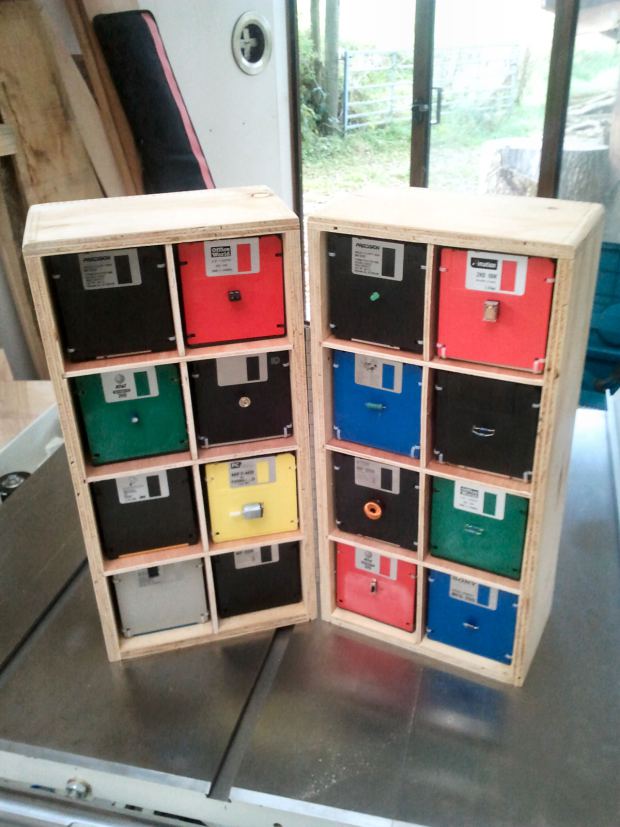We recently attended the Mach Mini Maker Faire, and took along our upcycled mobile component store/ organizer. It got quite a bit of attention: reactions varying from delighted chuckling, to quiet nods and “I’m going to have a go at making one when I get home” noises.
This is the write up of that project, in which we make a safe and handy storage organiser for medium to small electronic components. These were our requirements: first, we wanted it to be mobile, so we could take it to places like the Maker Faire, as well as back and forth from home to the Flowering Elbow workshop. Second, it had to be effective and easy to use – while it needed to do a good job of keeping things safe and dust free, we needed easy access to its contents (no rifling through multiple compartments looking for this or that component). Third, it would be nice if it could be quickly mounted on the wall at the shop, to keep it in place, out of harm’s way and easy to access. Fourth, in line with the Flowering Elbow ethos, we wanted it to be made almost exclusively from re or upcycled material. Here’s what we came up.





